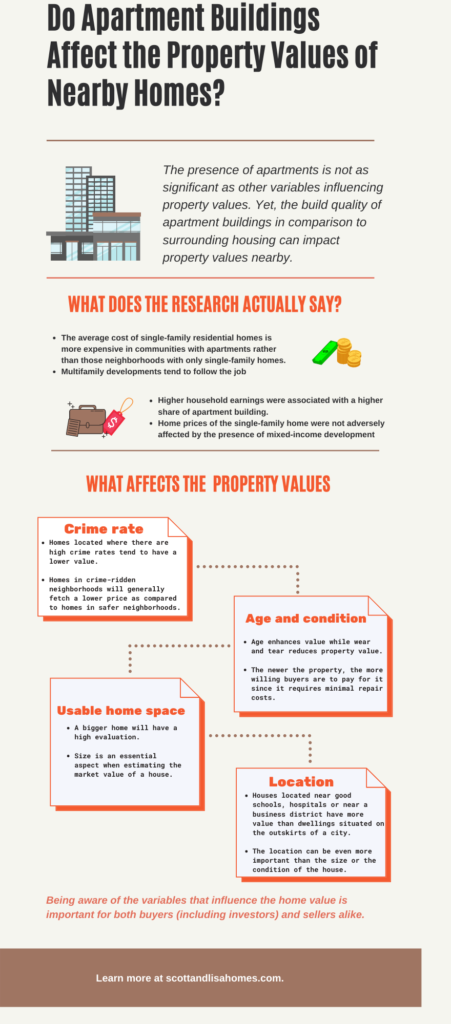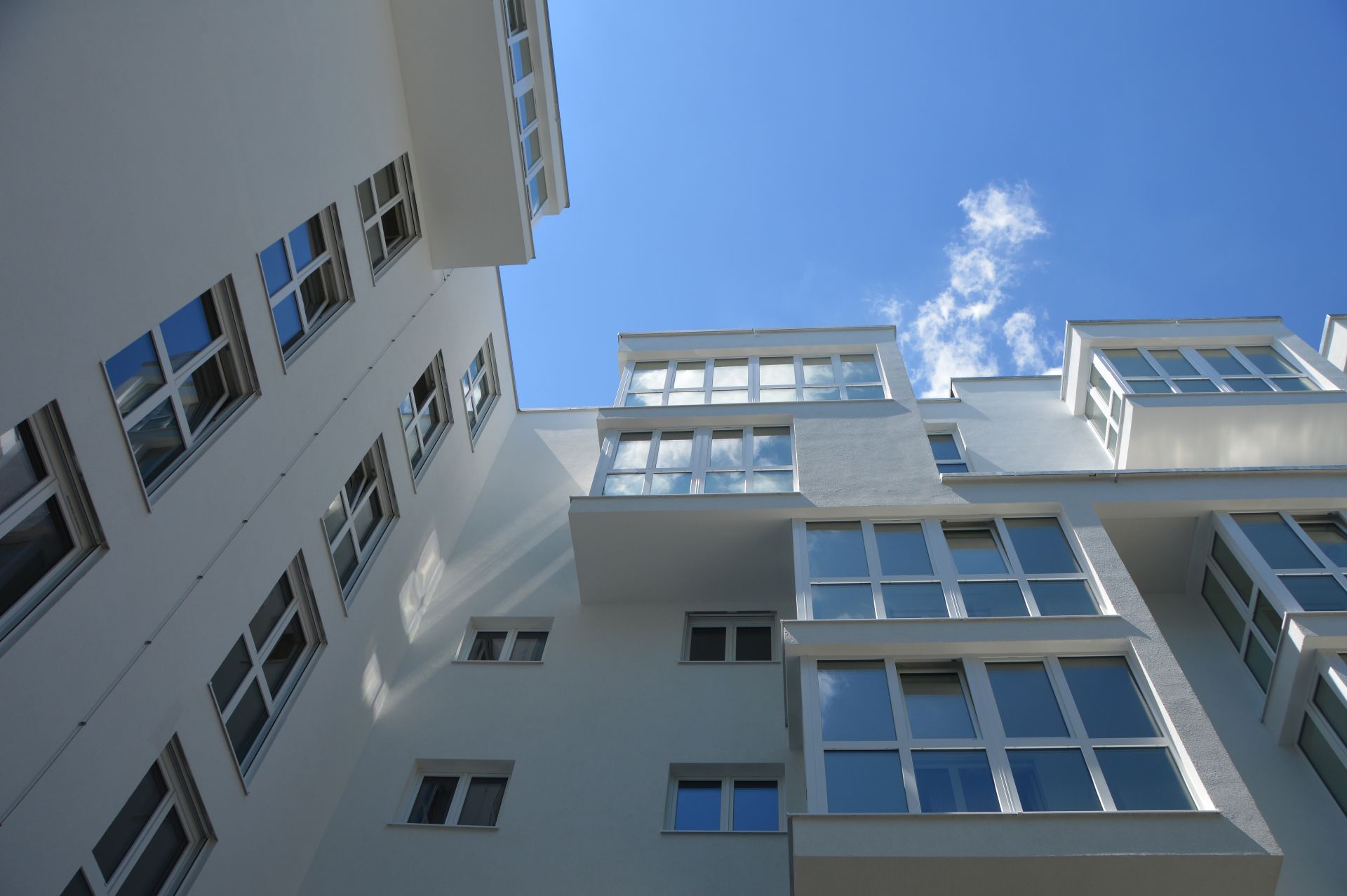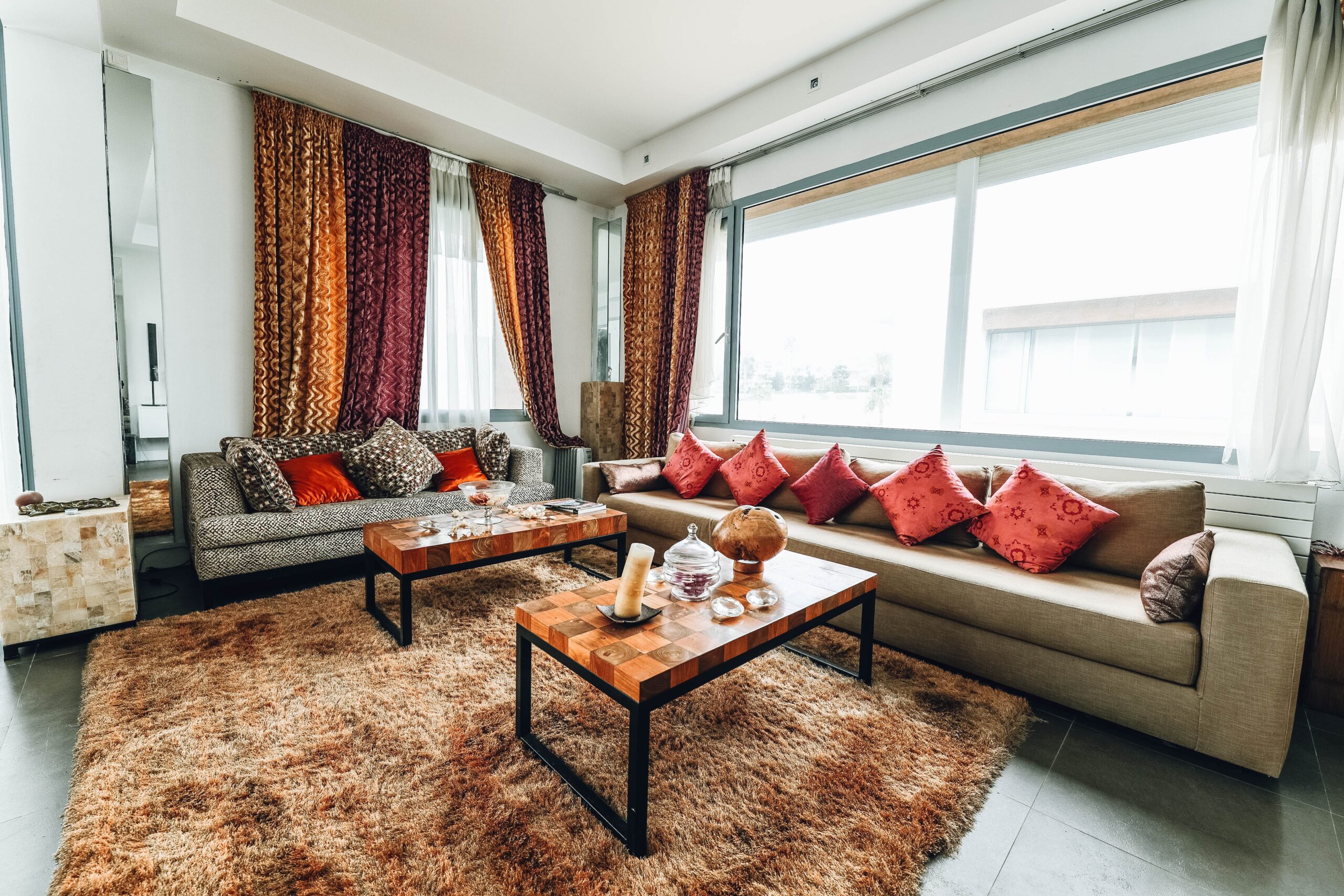Multifamily housing is a building designed to house several different families. The most common multifamily housing is apartment buildings. The entire building is owned by an individual, company, or individual who has purchased units.
But does the existence or development of apartment buildings impact the surrounding homes’ property value? Some people see these buildings as structures that come to their neighborhood to block sunlight and bring noise and traffic.
Some also think that apartment projects reduce the value of surrounding property, while others don’t. Knowledge of the impact of multifamily housing on surrounding property values is limited, hence the two contrasting opinions. Let’s address the lack of knowledge and make known the real implications of apartment buildings on surrounding property value.
So what does the research actually say?
Concerns that the presence of apartments will lower the value of single-family houses have driven many people to oppose new apartment developments. Real estate value concerns are set off by schemes to build low-cost apartments.
Local officials often voice their property value claims because they believe lower property value will reduce their communities’ tax base or reputation. The fear that a rise in apartments hurts property value seems to be based on anecdotes – as compared to communities without them.
In one study, the average cost of single-family residential homes was actually highest in communities with apartments in comparison with neighborhoods with only single-family homes.
The study also noted a similar trend with respect to earnings: among neighborhoods, higher household earnings were associated with a higher share of apartment buildings. Multifamily developments tend to follow the job, meaning, where there is a large concentration of employees there are going to be many apartment buildings.
Studies done on the impact of mixed-income housing developments found that home prices of the single-family home were not adversely affected by the presence of mixed-income development. In fact, in many cases, the developments had a positive effect on single-family homes.
Let’s take a look at the bigger picture
The presence of apartments is not as significant as other variables influencing property values. Yet, the build quality of apartment buildings in comparison to surrounding housing can impact property values nearby.
Instead of focusing solely on the affect of aparments on neighboring houses, it makes more sense to take a comprehensive look at what affects property values. No one variable is 100% correlated with property value, but here are some that are related in some instances. Remember, every state, town and neighborhood are different.
Crime rate
Crime affects the victim and society. Criminal activity can shift between neighborhoods like an infectious disease, making residents avoid these neighborhoods or move out. Crimes affecting a community include; robbery, assault, and rape, among others. Even petty crime like porch pirates can affect morale.
Homes located where there are high crime rates tend to have a lower value. They are in lower demand because people will not want to move where they will not feel safe. Homes in crime-ridden neighborhoods will generally fetch a lower price as compared to homes in safer neighborhoods
Location
The location of residential properties affects their market price as well. Variables related to location that can affect property value include: accessibility to products and services, characteristics of the neighborhood, socio-economic amenities, and traffic among others things. In general, houses located near good schools and hospitals or near a business district have more value than dwellings situated on the outskirts of a city.
Besides, a location’s closeness to highways, and public transit can impact a home’s buying price. When calculating the purchase price, the location can be even more important than the size or the condition of the house.
Age and condition
Age is another factor that plays a significant role in determining the price of a house. The newer the property, the more willing buyers are to pay for it since it requires minimal repair costs. Age enhances value while wear and tear reduces property value. Critical parts of the house like plumbing, heating, and electrical should be in good working condition.
Many buyers will pay top-dollar for a move-in-ready home; this is why most buyers want an inspection option to negotiate repairs to avoid any significant expenses following the sale.
Usable home space
Size is an essential aspect when estimating the market value of a house. A bigger home will have a high evaluation. The price of a house is calculated I price per square foot. The price buyers will pay per square foot varies.
Usable home space matters when calculating its price. For instance a garage is not classified as usable space. Livable space is what matters to buyers.
Final Thoughts
The negative perception of the risk associated with the building of apartments is dominant, even if negated by research and surveys. Once apartments are constructed and inhabited, negative attitudes about them usually subside.
When looking to buy a home, remember to look beyond the attractiveness of the house because physical structure depreciates over time. A home in a great location will give you a significant advantage for a resale profit.
Buyers should be aware of of all the factors that affect property value to ensure they pay a fair price. Being aware of the variables that influence the home value is important for both buyers (including investors) and sellers alike.






